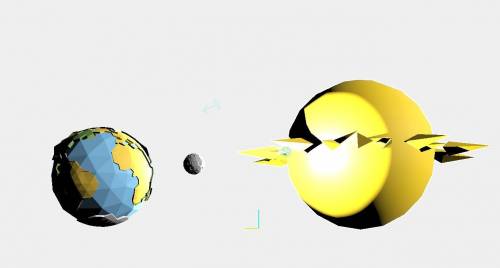
Physics, 31.07.2019 01:30 alyssa0888
Choose either eclipses or lunar phases and make a model of the event. your model can take any form, providing it can explain how your event takes place. once you have created your model, use it to teach someone else about lunar phases or eclipses. submit a picture, video, or diagram of your model to your instructor, along with evidence of how you used your model to explain your selected event. activity checklist include a picture, video, or diagram of your model of lunar phases or eclipses. provide a description of how you made your model and how it demonstrates eclipses or lunar phases. include a one-paragraph reflection on the success of your model in explaining your event. include the name of the person you taught about your event and that person's description of what they learned from your model.

Answers: 1


Other questions on the subject: Physics

Physics, 21.06.2019 22:40, Animallover100
Which feature indicates that mars resides in the inner region of the solar system
Answers: 3

Physics, 22.06.2019 04:00, binodkharal2048
Which configuration would produce an electric current? a) rotate a coil of copper wire between two magnets. b) connect a wire between a copper and zinc strip sitting in a beaker of water. c) connect a wire to the (+) positive end of a battery and the other end to a light bulb. d) connect a wire to the negative end of a battery and the other end to a light bulb.
Answers: 2

Physics, 22.06.2019 07:00, gracie18383
We have a colorless transparent liquid. it looks like water. we seperated it into a solid and a liquid by evaporration and condention was this a chemichal or a physical seperation a. chemical seperation b. physical seperation
Answers: 3

Physics, 22.06.2019 11:30, ramirezzairap2u4lh
Water is siphoned from a large tank and discharges into the atmosphere through a 50-mm diameter tube. the end of the tube is b = 2.1 m below the tank bottom which is a = 7.4 m deep, and viscous effects are negligible. determine the maximum height h over which the water can be siphoned without cavitation occurring. atmospheric pressure is 101.4 kpa, and the water vapor pressure is 1.79 kpa (absolute)
Answers: 3
You know the right answer?
Choose either eclipses or lunar phases and make a model of the event. your model can take any form,...
Questions in other subjects:



Mathematics, 21.10.2019 13:20



Mathematics, 21.10.2019 13:20


Mathematics, 21.10.2019 13:20

Chemistry, 21.10.2019 13:20




